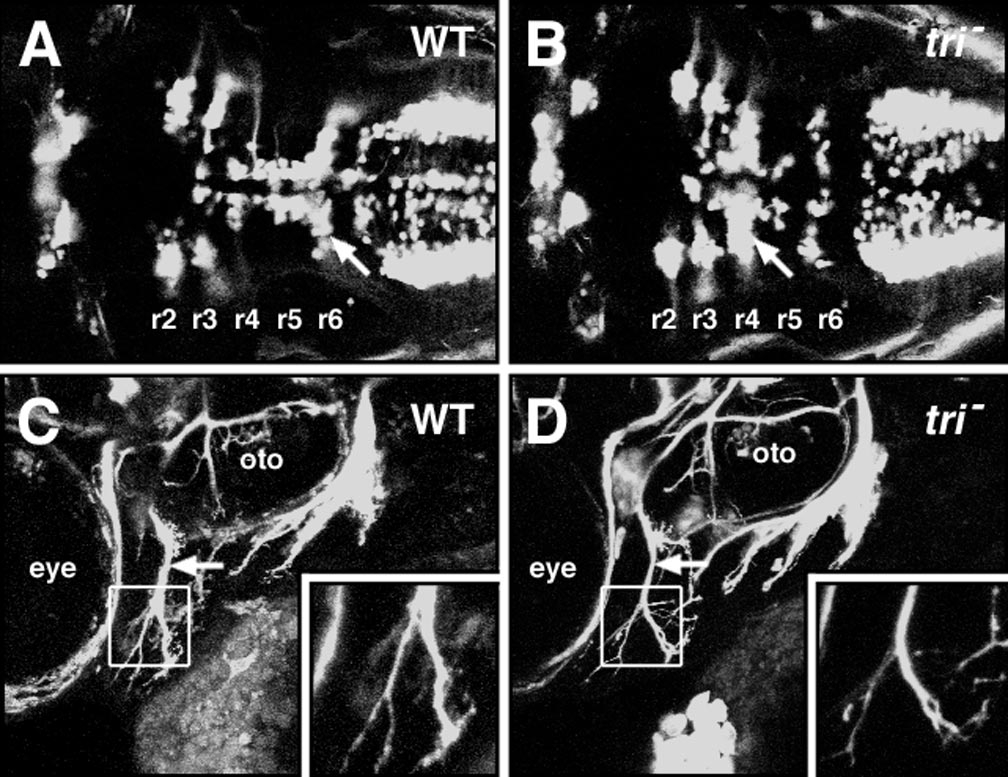Fig. 4 Mutant nVII motor axons extend correctly into the hyoid arch. (A) and (B) show dorsal views, and (C) and (D) show side views with anterior to the left in all panels. (A) In a 96-HPF wild-type sibling, most nVII neurons (arrow) are found in r6. (B) In a trilobite mutant, the nVII neurons (arrow) are found exclusively in r4. The few GFP-expressing cells in r6 are not nVII neurons because they do not extend axons into the hyoid arch (n = 16 embryos). (C) In a 48-HPF wild-type sibling, nVII axons (arrow) extend into the hyoid arch. The inset image is a higher magnification view of the boxed area and clearly shows a characteristic branching of the nVII axons. (D) In a tri mutant, the pattern of nVII axon extension into the hyoid arch, including the characteristic branching (inset), is indistinguishable from that of its wild-type sibling. oto, otocyst.
Reprinted from Developmental Biology, 242(2), Bingham, S., Higashijima, S.-I., Okamoto, H., and Chandrasekhar, A., The zebrafish trilobite gene is essential for tangential migration of branchiomotor neurons, 149-160, Copyright (2002) with permission from Elsevier. Full text @ Dev. Biol.

